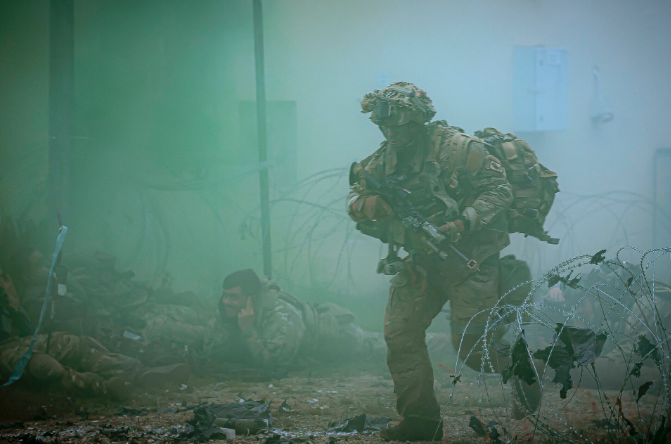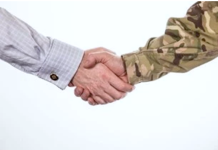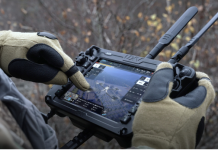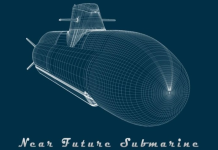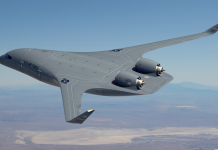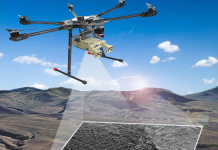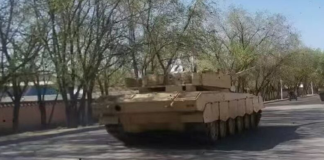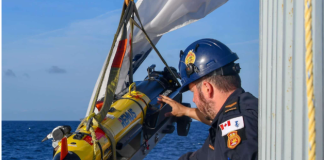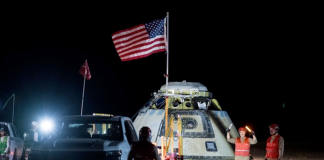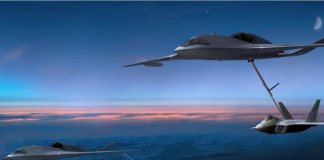As the Defense Department pursues new ways to share data across echelons and security domains, the role of the “connected warrior” continues to evolve from that of command-driven warfighters to warriors with access to relevant data that enables them to make informed, operational decisions in the absence of direct orders from command posts.
Not an easy undertaking as doing so requires creating a base level for data security and management so communications and intelligence can be shared with maneuver forces to create a common operating picture (COP) of their individual battlespaces.
“Persistent issues seen across all levels include translating classified data for sharing among diverse services, organizations, and coalition partners,” said Chadwick Ford, team lead for Army Connected Battlespace Capabilities at Collins Aerospace. “Managing data security across various levels and enclaves, alongside creating a unified COP and maintaining connectivity in degraded environments while on the move, remains a formidable challenge.”

Chadwick Ford is team lead for Army Connected Battlespace capabilities at Collins Aerospace.
It’s a challenge, though, that Collins Aerospace is actively addressing. Its execution of the connected warrior concept includes not only basic battlefield communication and movement, but an understanding of the broader operational situation and one’s specific role is critical. In contested environments, it’s not about having constant connectivity but having timely access to relevant data for informed decision-making.
“The decentralized command structure of the United States military is a key strength,” said Ford. “Whether leading a task force, air assault unit, or maneuver force, commanders wield authority within defined constraints, managing units effectively and maintaining connectivity, even without continuous communication with higher headquarters.
“Ultimately, connected warriors possess a deep understanding of their role within the operational context, enabling effective mission execution despite communication challenges. They’re best suited for informing the capability testing we conduct in the theaters where they operate. They’re the driving force behind a lot of the work we do.”
As an example of that, Collins recently partnered with the Army’s 1st Multi-Domain Task Force at U.S. INDOPACOM’s Valiant Shield exercise to demonstrate the best way to enable a unit to take command and control (C2) capabilities from a fixed site and quickly integrate them onto a ground vehicle for more resilient, distributed C2. Access to a variety of intelligence sources was provided by commercial and military communications networks. Battle management software using artificial intelligence and machine learning “made sense” of the data from various sources. That created fused situational awareness that was shared with bilateral and joint force partners.
The mission command on-the-move capability significantly enhanced C2 operations by seamlessly integrating with networks such as the Integrated Tactical Network, Joint Fires Network, and commercial networks,” said Ford, noting that it facilitated quick transitions between fixed and mobile sites during multi-domain operations, enhancing both survivability and situational awareness.
“It is a roadmap for advancing the technology suite in successive large force exercise demonstrations that show how the capability can scale to connect more networks and provide joint and coalition forces with a more decisive edge in the early stages of a conflict.”
From identifying issues to deploying solutions
Developing a rapid transition between fixed and mobile sites during multi-domain operations extends far beyond the normal complexity of procurement and the standardization of equipment. Given the emerging role of AI, cloud computing, commercial 5G, and Low-Earth-Orbit (LEO) satellite communications capabilities, the aperture of today’s battlespace is being greatly widened and with it the need for clearly defined objectives and requirements.
Tackling this challenge is not necessarily about building interfaces between systems. That’s part of the solution but it only addresses the hardware challenge.
“To effectively move from identifying problems to implementing solutions in the development of a COP, the DoD and its industrial partners must adopt a strategic approach,” said Ford. “This begins with clearly defining operational objectives and requirements for the COP across all military echelons and domains.
“Close collaboration through joint working groups, consortia, and research agreements is essential to address specific COP challenges. Incentivizing innovation within the industrial base with grants, funding opportunities, and contracts focused on COP development promotes creative problem-solving and rapid prototyping.”
That includes embracing agile development practices to quickly respond to evolving operational needs and technological advancements. Standardization also plays a role in interfaces and data formats that enable interoperability and information exchange for the real-time decision-making capabilities mentioned earlier.
In addition, exercises like Valiant Shield and the Army’s Project Convergence play an important role in validating the effectiveness of COP solutions by providing critical feedback for further enhancement.
It is through these strategies that the DoD and its industrial partners can progress from identifying issues to actively developing and deploying solutions that optimize COP across domains.
The primary challenges in creating a unified and coordinated approach across the DoD lie in the scale of the task, the time required to implement the necessary changes to existing programs, and the prior investments made in stove–piped capabilities that now must become a node in Joint All Domain Command and Control, for example.
Transitioning from identifying problems to implementing solutions represents an enormous challenge for the DoD and its industrial partners, calling as it does for a focused approach on standards for data and connectivity. Seamlessly harmonizing programs requires connectivity across various platforms, be they mounted, dismounted, crewed or uncrewed. Resolving these issues will require a phased approach and a commitment of time to implement comprehensive solutions.
“It’s analogous to not having Apple CarPlay in your car,” said Ford. “Without it, connecting to Apple CarPlay becomes nearly impossible without resorting to expensive aftermarket solutions, which may not guarantee success.”
It’s clear that providing soldiers with a common operating picture will help them function independently and execute commander’s intent when communications are contested.
“These are complex problems we are solving, and it takes partnership between DoD and industry to solve them, and incentivizing innovation within the industrial base with grants, funding opportunities, and contracts focused on COP development. That promotes creative problem-solving and rapid prototyping,” said Ford.”
In the reach toward a common operating picture, questions such as: how data is transformed into intelligence; how it’s protected and shared; and how decisions are made and by whom and at what speed, become crucial to the transformative journey that the DoD must take to counter great-power adversaries.
While pilot programs and demonstrations provide the necessary feedback for operational and technological advancements, connectivity and interoperability ultimately succeed or fail in the theater of operations.
In the military context, there are evident issues with connection, data flow, and information exchange across services, complicating effective communication even within the same service echelons. While the technology exists, the scale of the challenge necessitates concerted effort, resources, and funding from multiple individuals and service branches.
“Integration is crucial,” notes Ford. “A focused approach on standards for data and connectivity is essential to harmonize programs seamlessly. Depending solely on a single program manager is impractical, particularly across diverse military branches.
“Addressing this challenge is undeniably formidable, but it requires incentivizing individuals and organizations to collaborate and innovate towards solutions. Without such collective motivation, this connectivity issue will persist indefinitely.”

